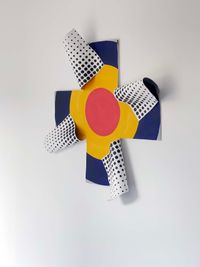
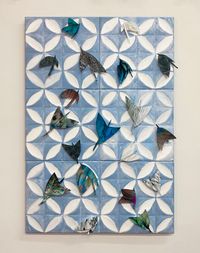
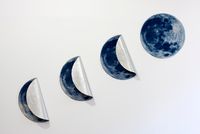
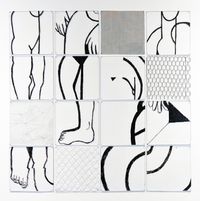
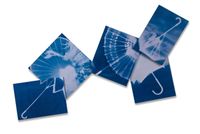
We are pleased to present more than seventy years of work by American artist Susan Weil (b. 1930, New York). This retrospective pays tribute to one of the most inventive artists of the 20th century.
Weil, whose work is in the collections of New York's Metropolitan Museum of Art and Museum of Modern Art and London's Victoria & Albert Museum, is among the key female figures who pushed the boundaries of Abstract Expressionism, a movement largely defined by male painters. Like many women of her generation, Weil's work and career were overshadowed by the men around her, many of them boldface names in the canon of art history. But as the narrative of modern and contemporary art is slowly being rewritten to include more women, it is well past time to shine a brighter light on the art-historical significance of Weil's prodigious and wildly creative oeuvre.
'Susan Weil was the first artist I signed when I opened my gallery in New York in 2000,' says Sundaram Tagore. 'She was the first of a number of unsung women from the New York school I've represented over the past twenty-three years. Great work is great work. I started the gallery to challenge the notion that Western men make the most collectible art. That hasn't changed. It is my privilege to bring her work to ever wider audiences.'
Tracing the arc of Weil's seven-decade career, this exhibition includes an abstract landscape articulated in vivid shades of green from 1969. Alongside are several striking figurative works. Weil's nebulous human forms are one of the themes she has returned to again and again and still explores today, namely, time expressed abstractly and in relation to nature and the figure in movement.
The show features one of Weil's iconic blueprint works, part of a long-running series (1949–to the present) in which she utilizes a monoprint process she has experimented with since childhood. In 1949, Weil introduced the technique to Robert Rauschenberg and together they created a series of blueprints through 1951. The works were featured in Life magazine that same year—a notable achievement considering how a 1949 profile of Jackson Pollock in Life became a significant turning point in his career. In 1992, one of the blueprint collaborations was acquired by the Museum of Modern Art in New York for the permanent collection.
Also on view are tactile sculptural formations made from draped or crumpled canvas painted on both sides in bold color. Weil has cited the sensuous folds of fabric found in Renaissance art as inspiration for these dimensional works, a technique she has explored for decades in her Soft Folds series.
Always willing to experiment, the artist created several works especially for this exhibition using a new technique. Through trial and error, she discovered how to fracture the picture plane literally by creating controlled cracks in glass and mirror. In Quarter Past Four, a quadriptych glass grid, Weil emphasizes the fissures by filling them with white grout to accentuate the circular shape they form, while the single mirrored panel brings the viewer into the work. "I've spent a lifetime working. It's been both a serious and a joyful journey and I have no intention of slowing down," says Weil. At 93 years old, Weil is breaking glass in more ways than one.
Press release courtesy Sundaram Tagore Gallery.
4 Cromwell Place
Gallery 8
London, SW7 2JE
United Kingdom
www.sundaramtagore.com
+44 (0)20 8057 0789
Tuesday – Saturday
11am – 6pm